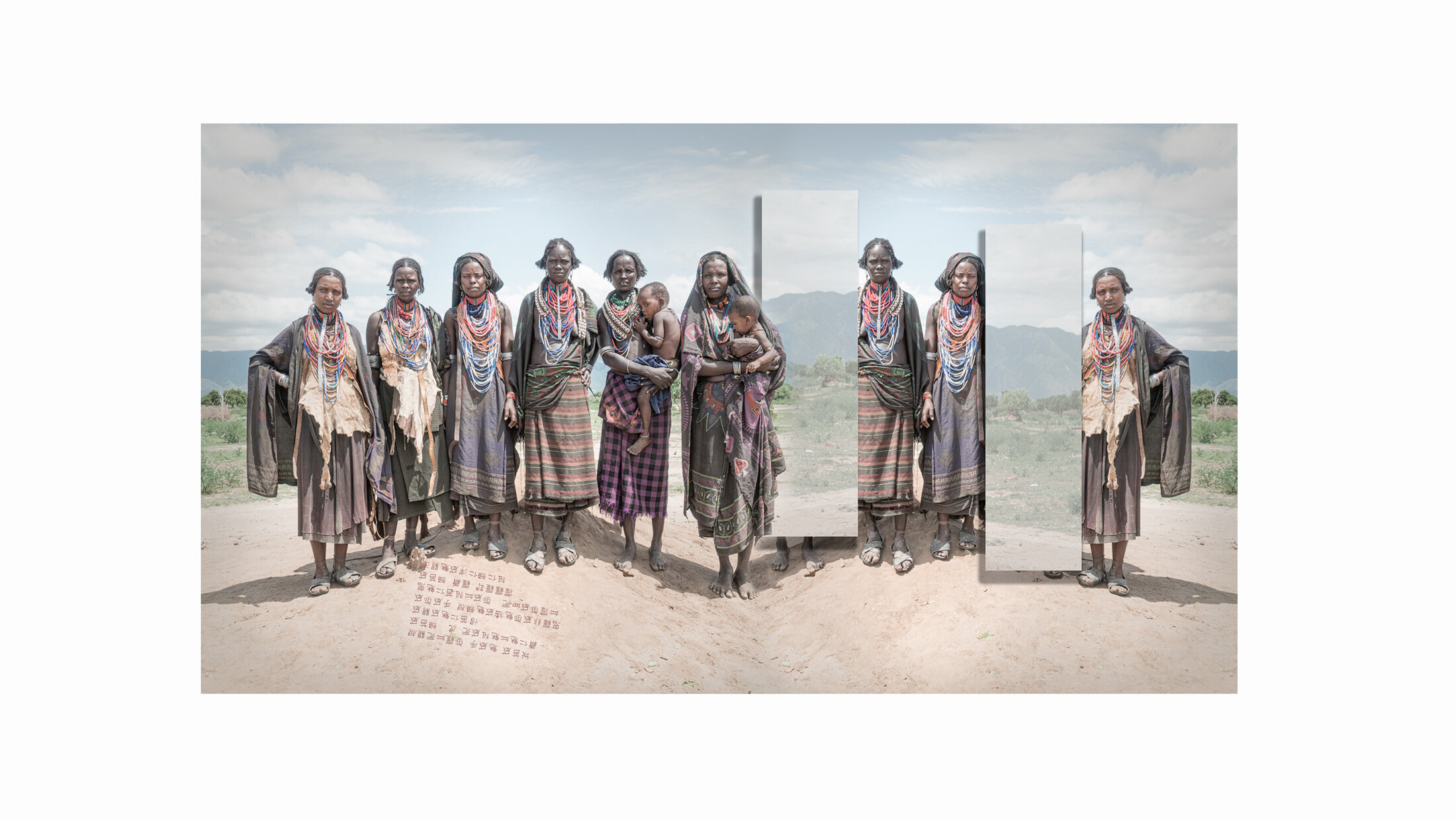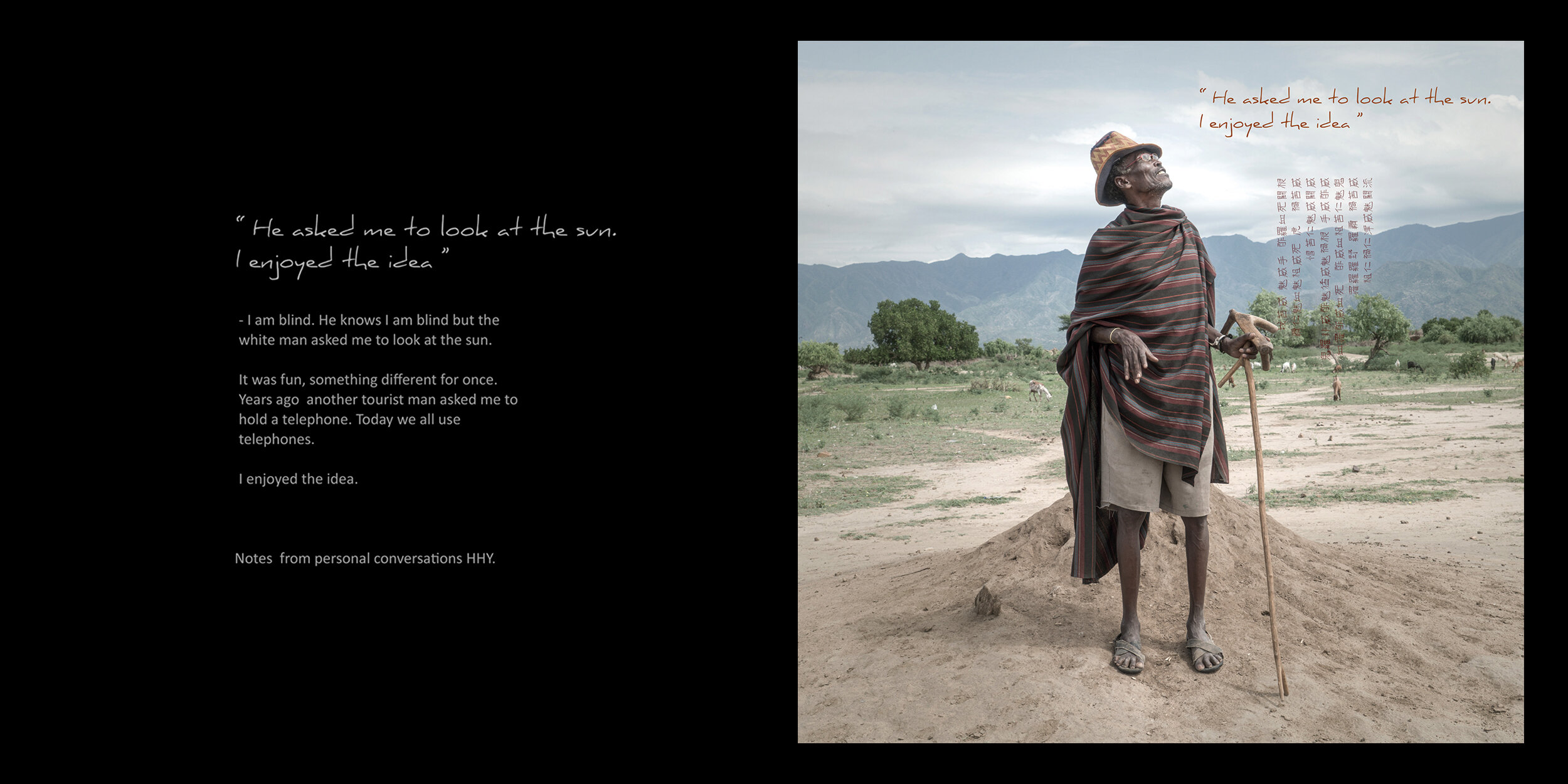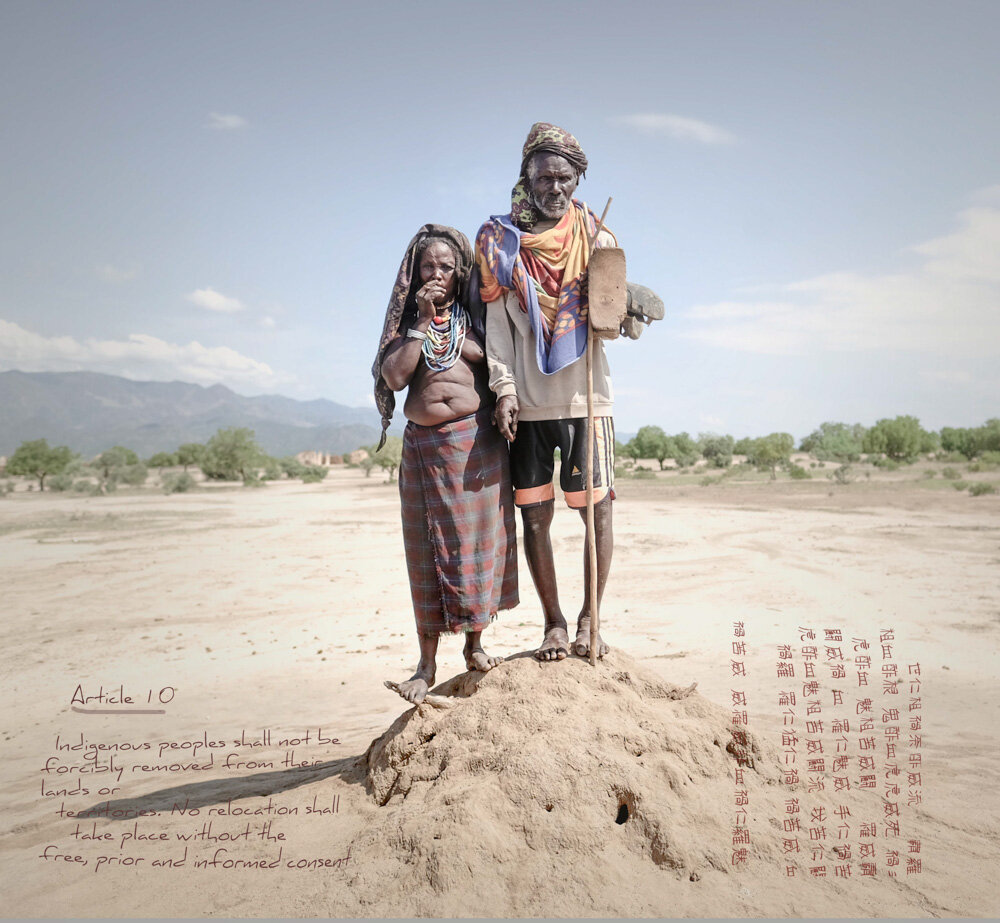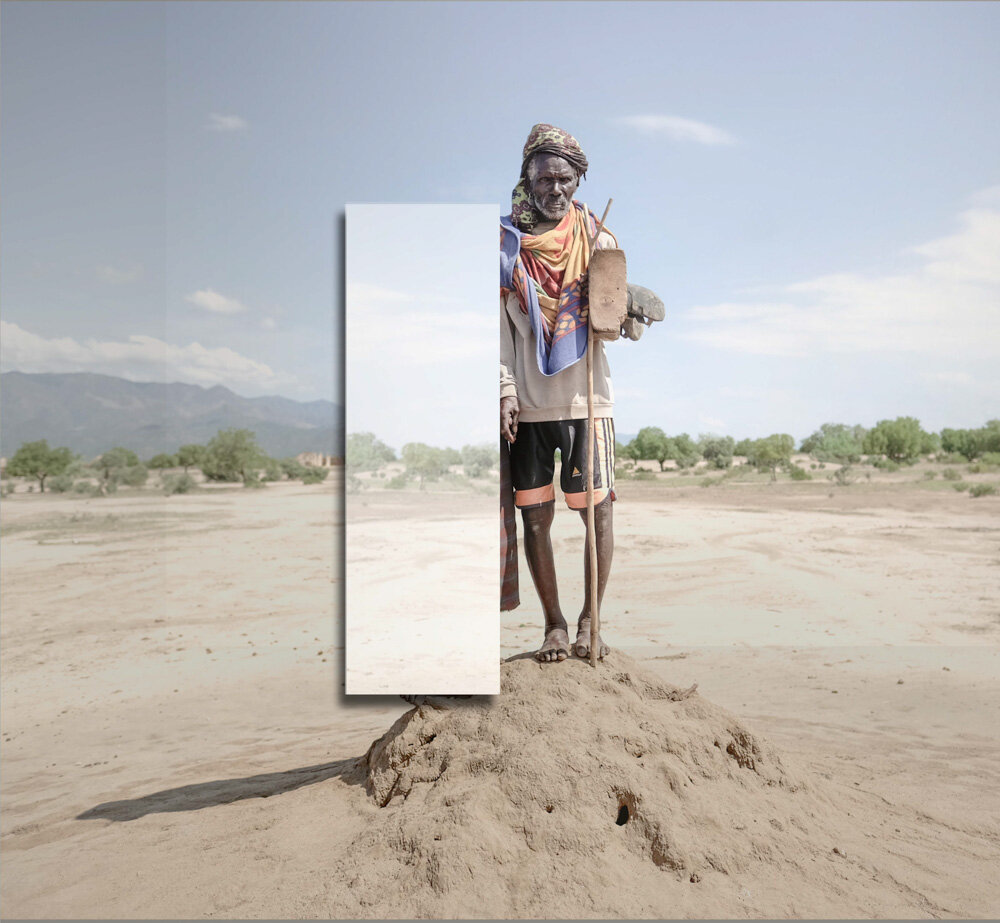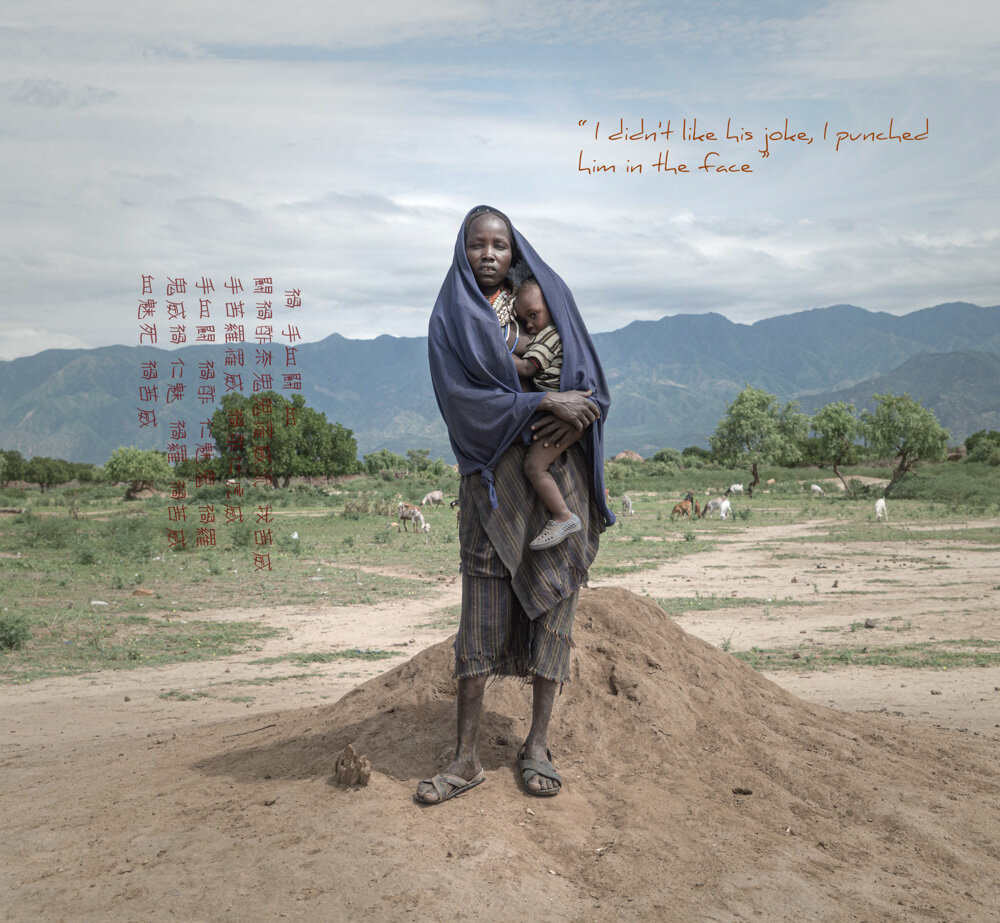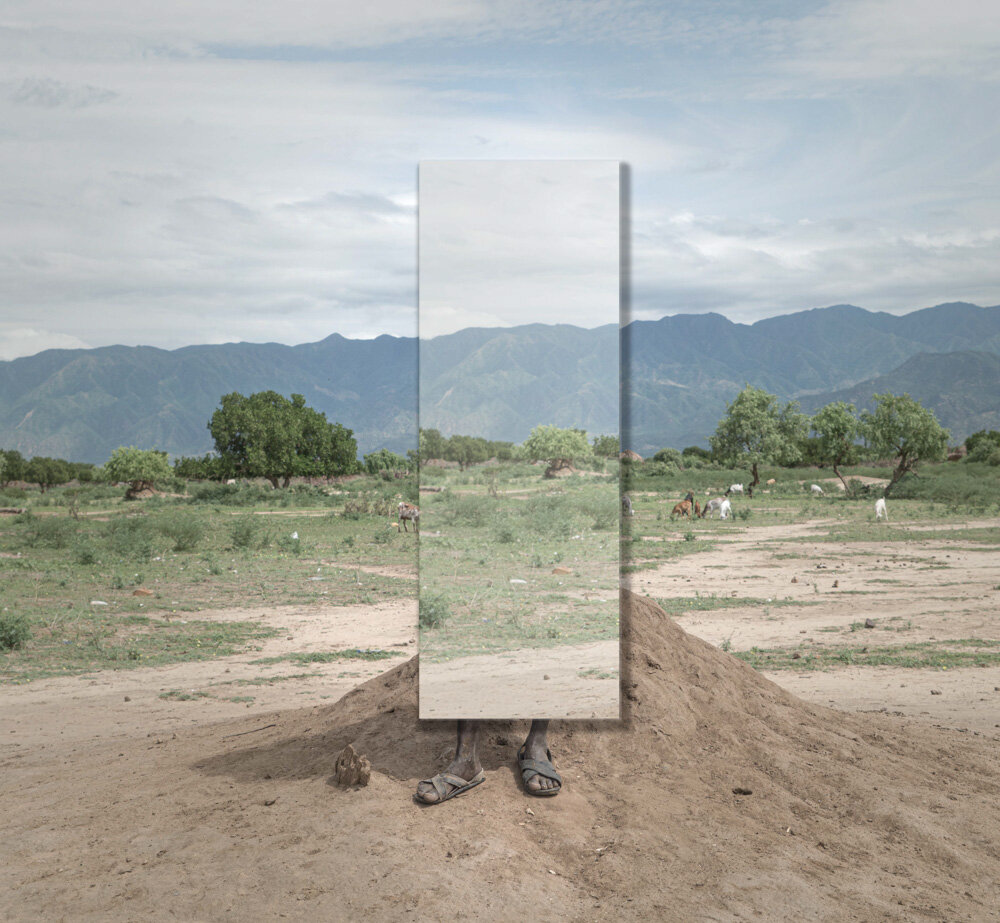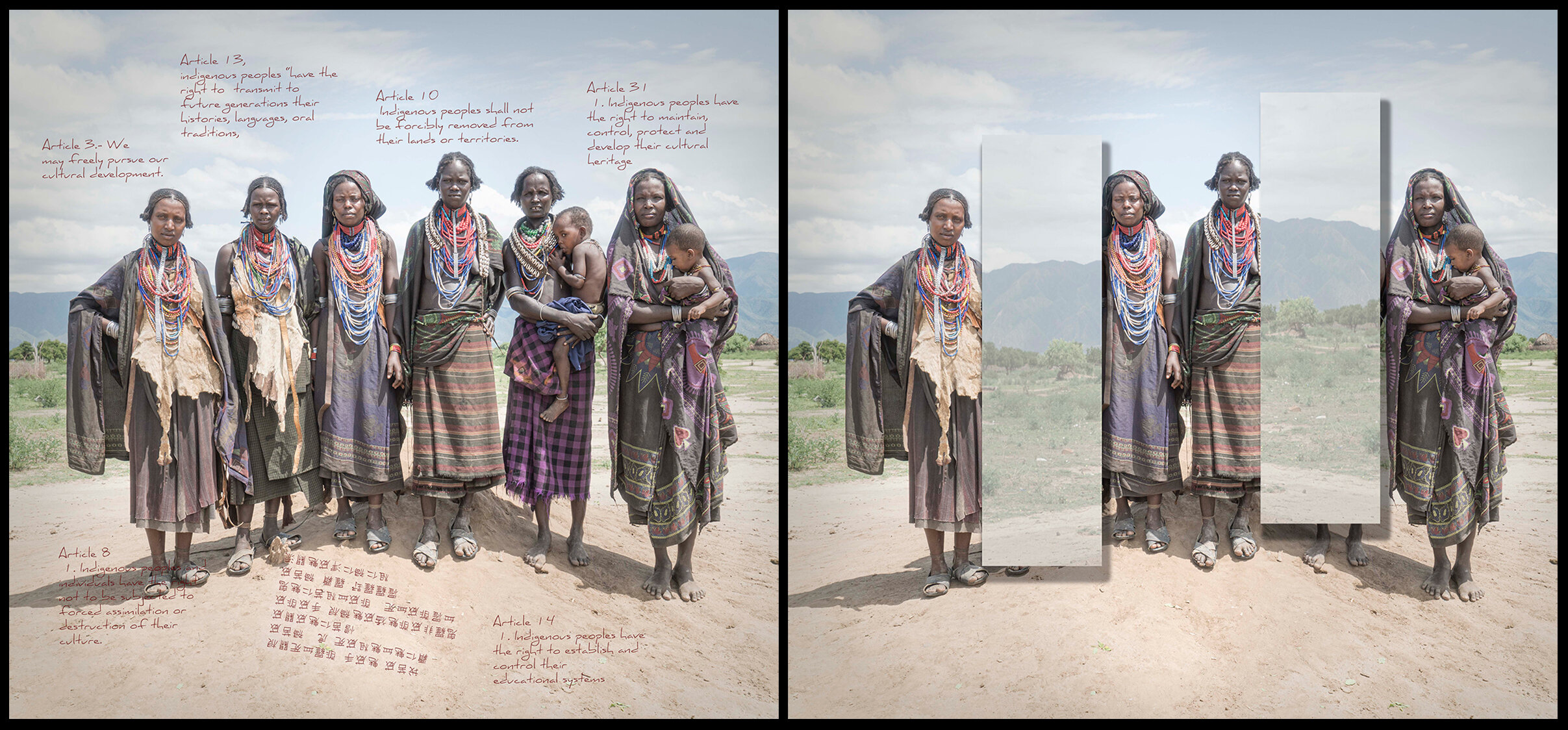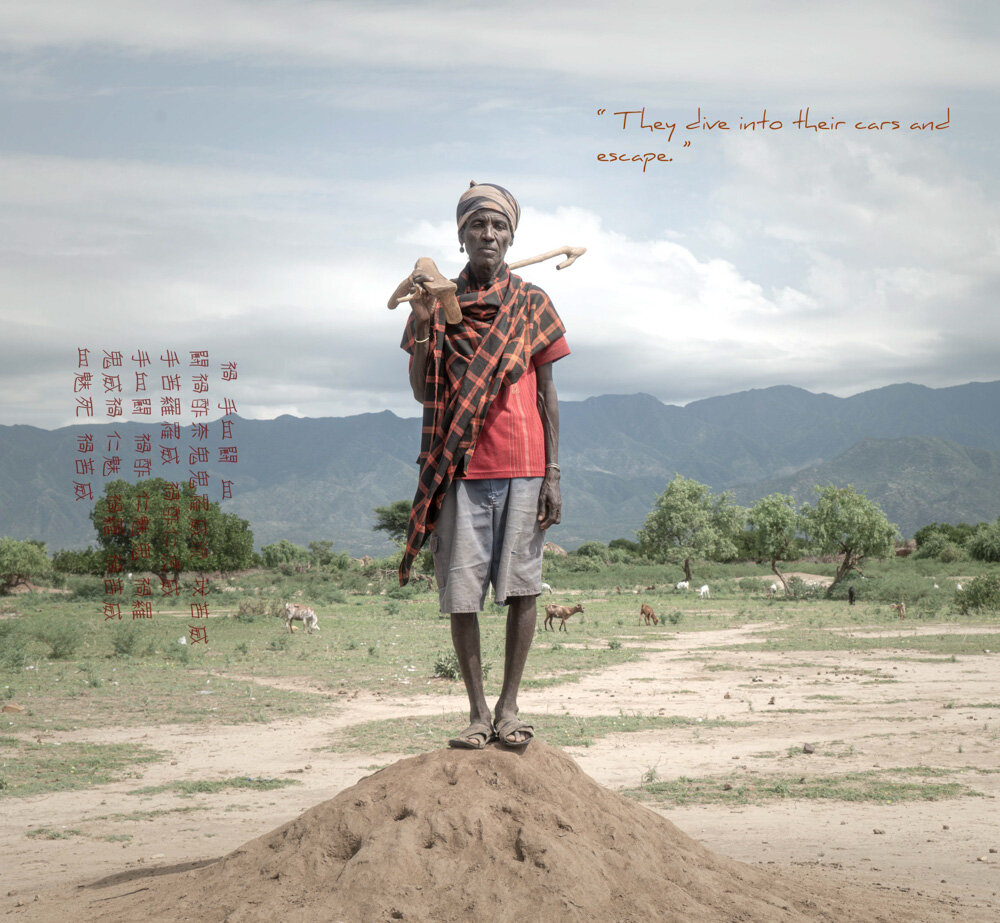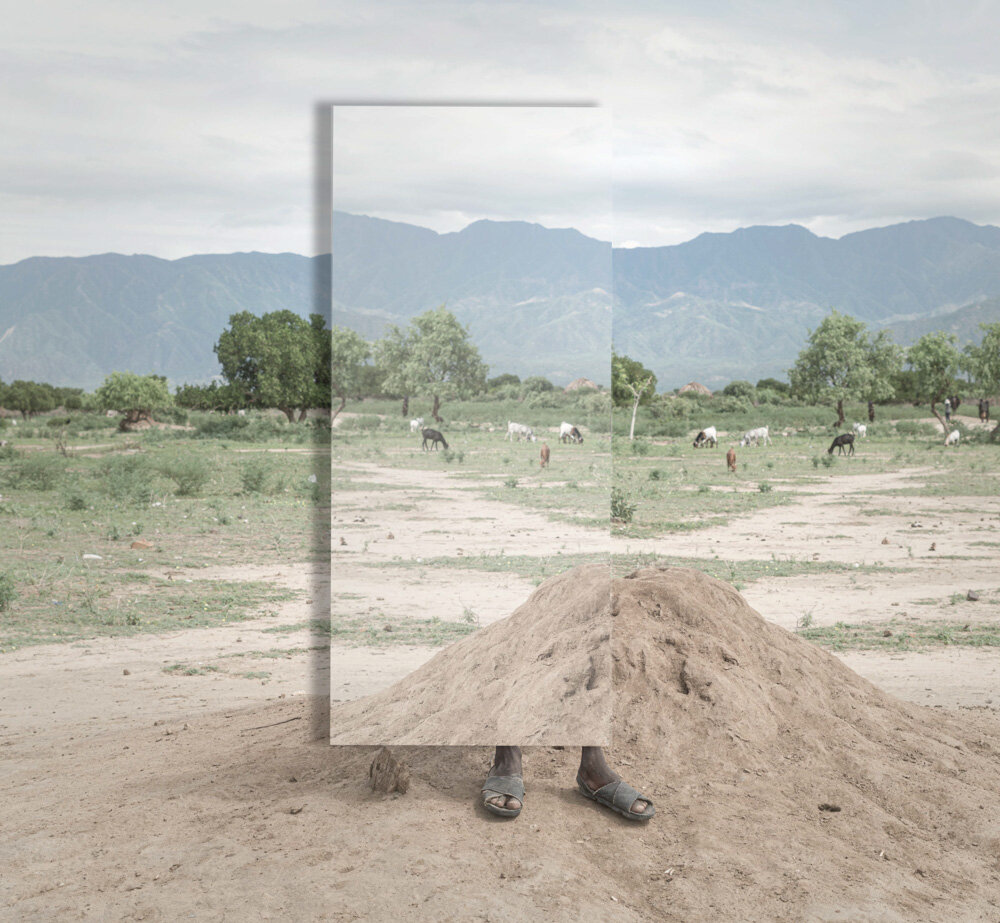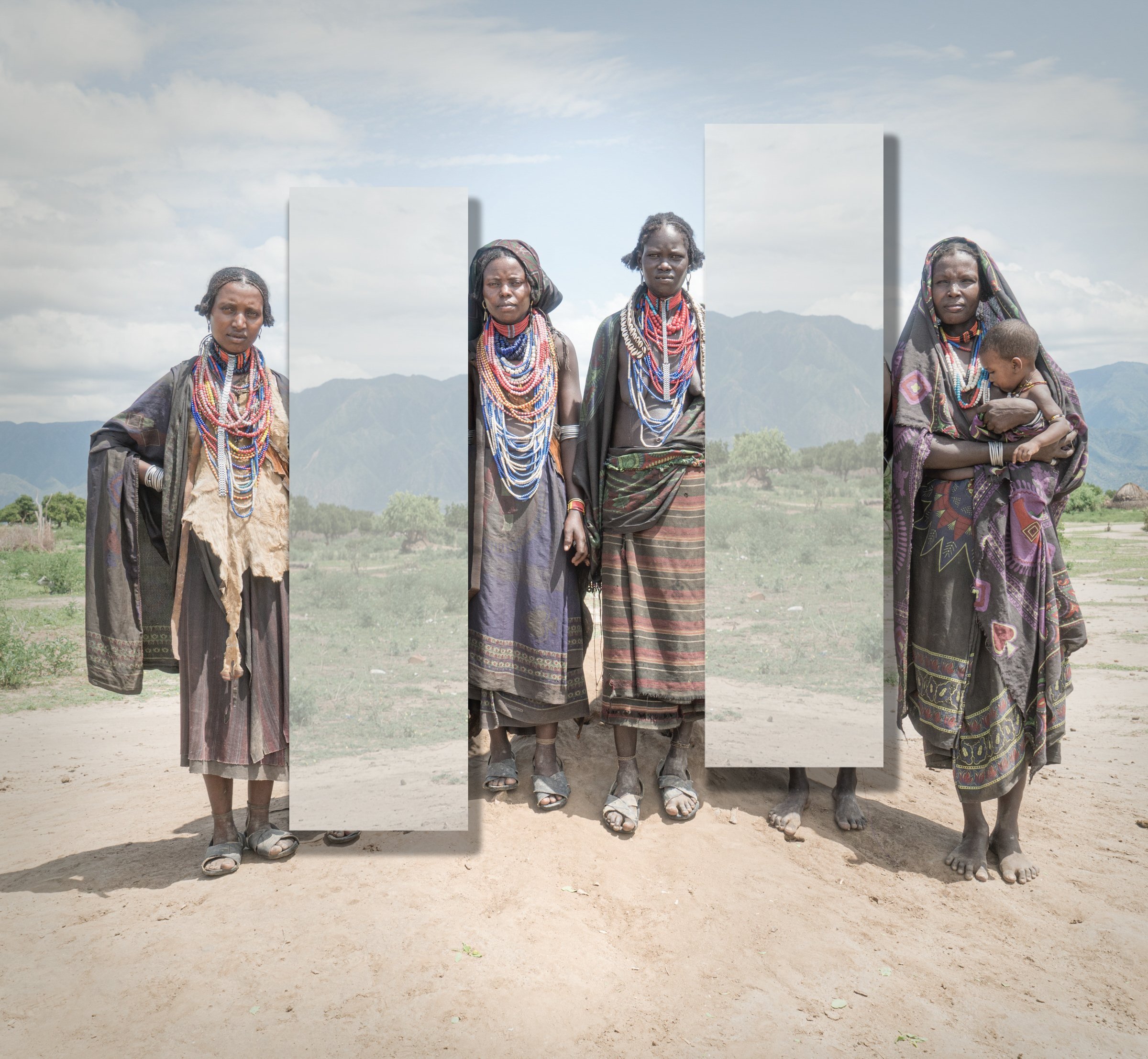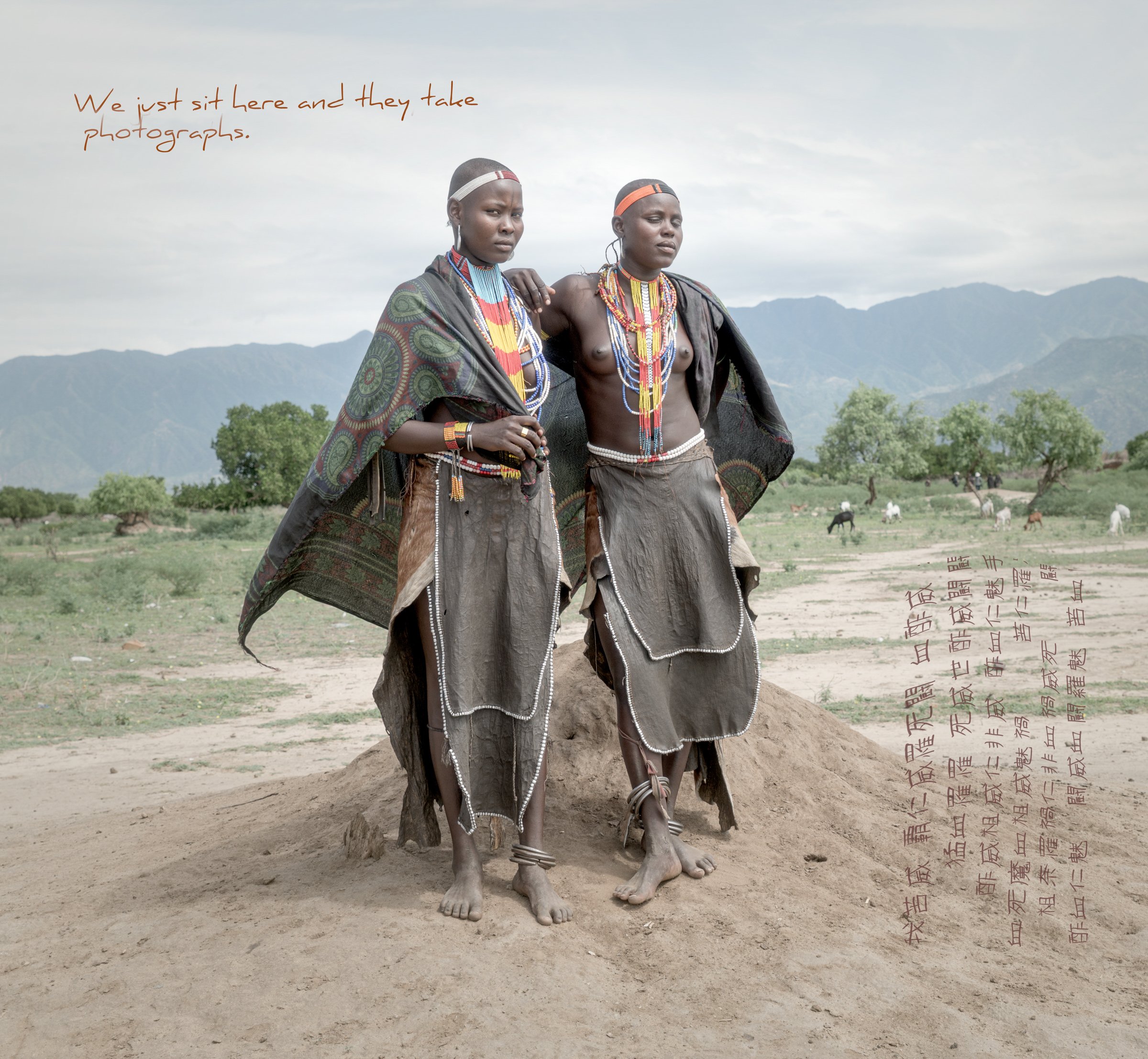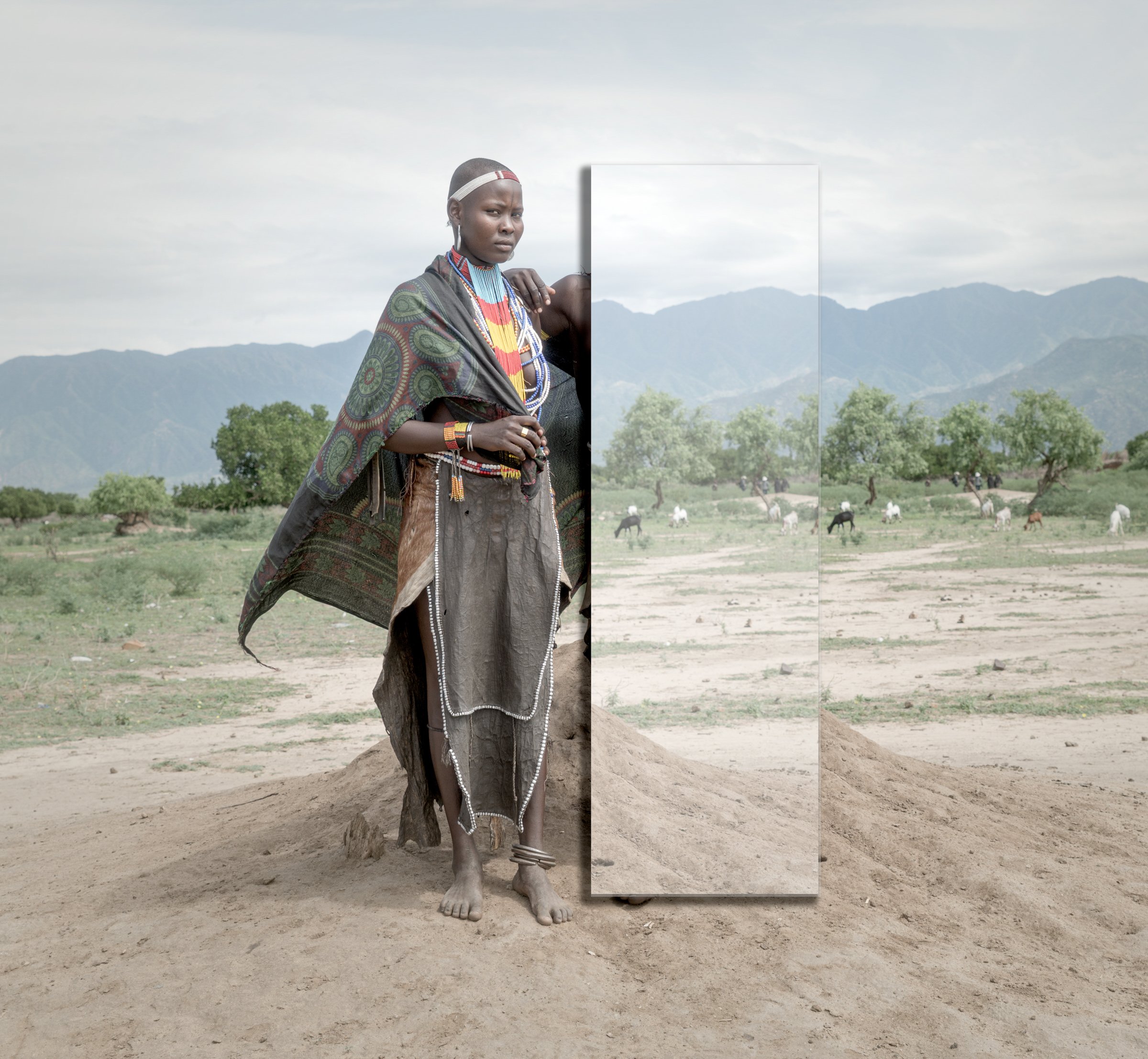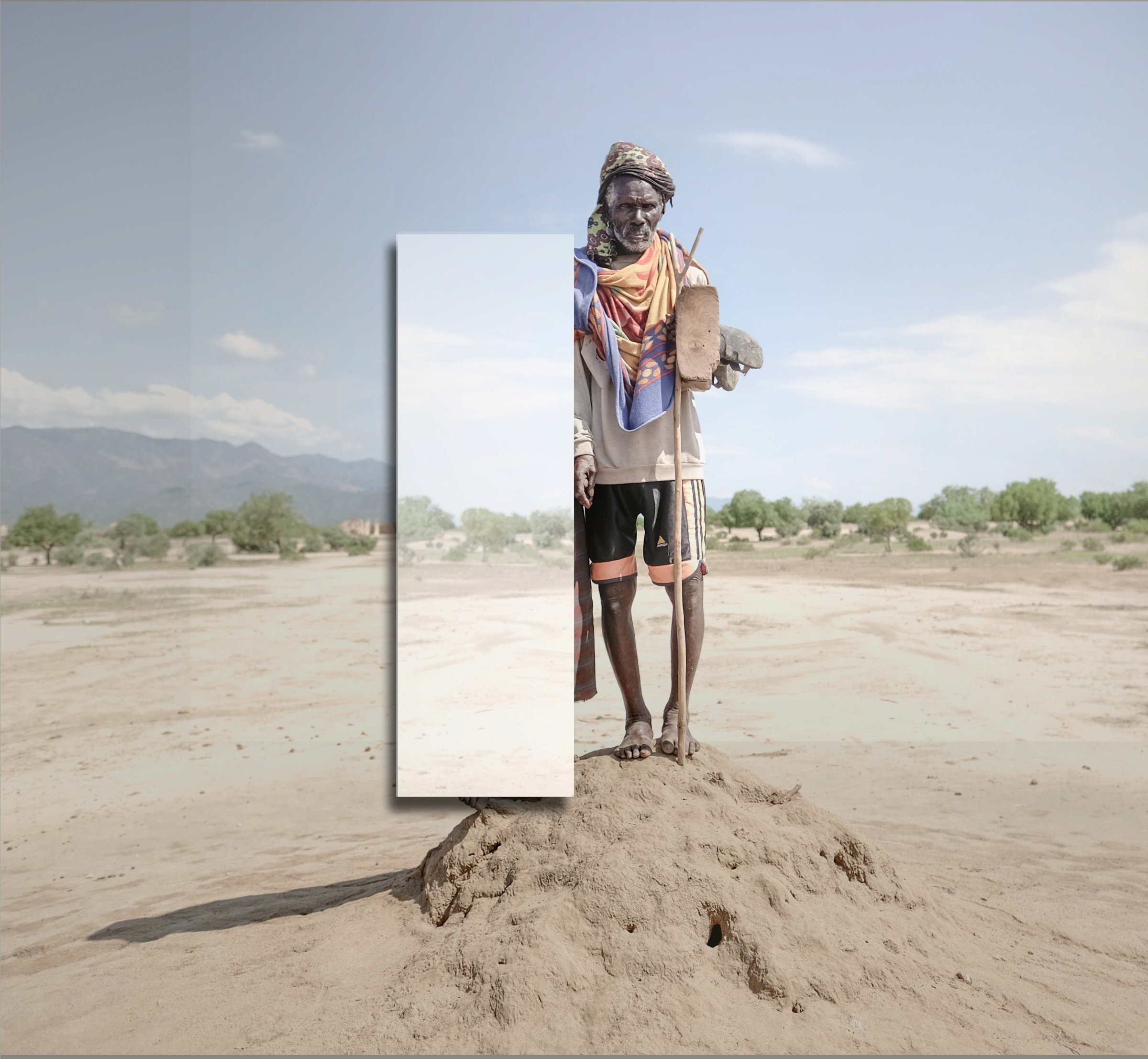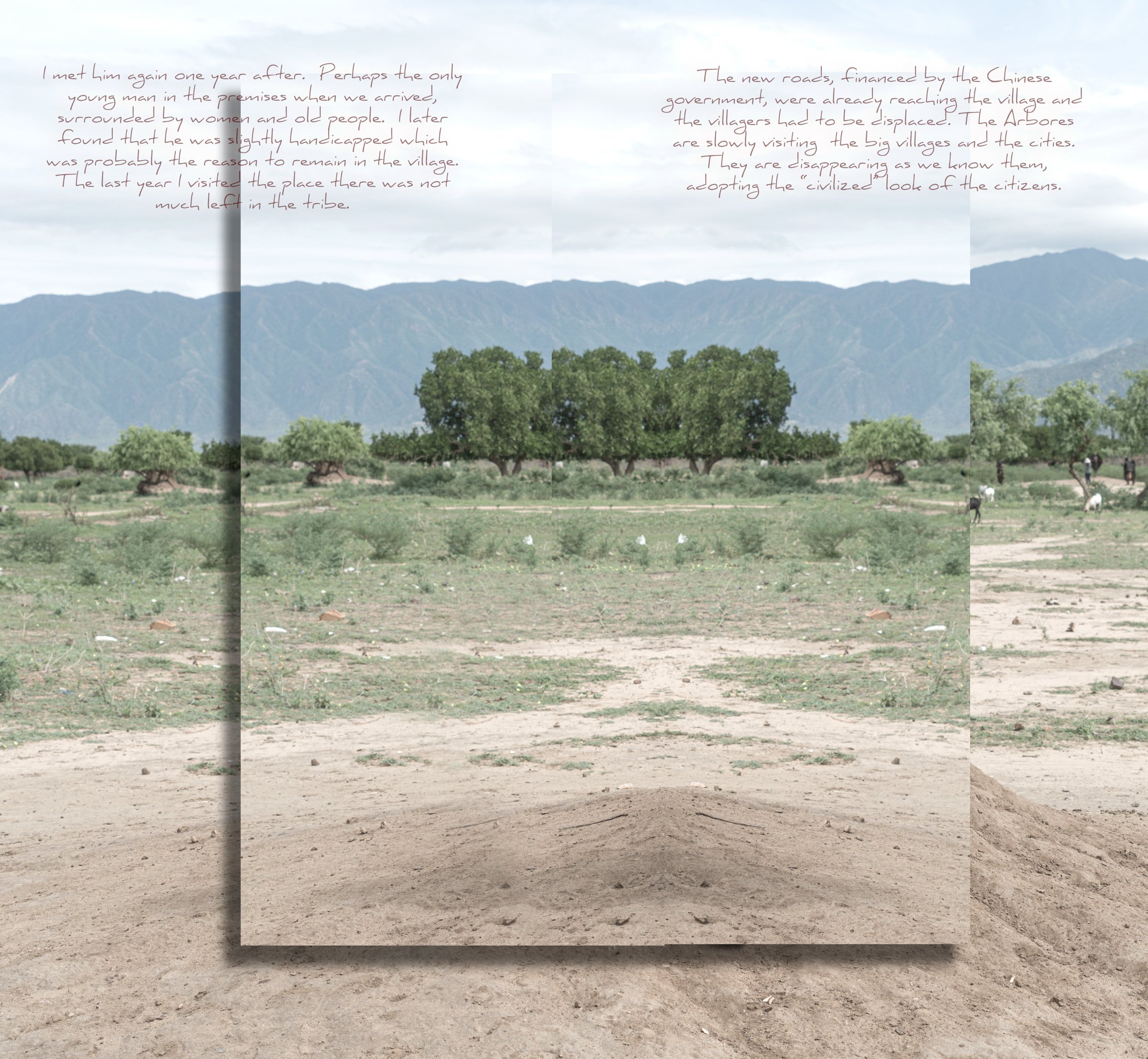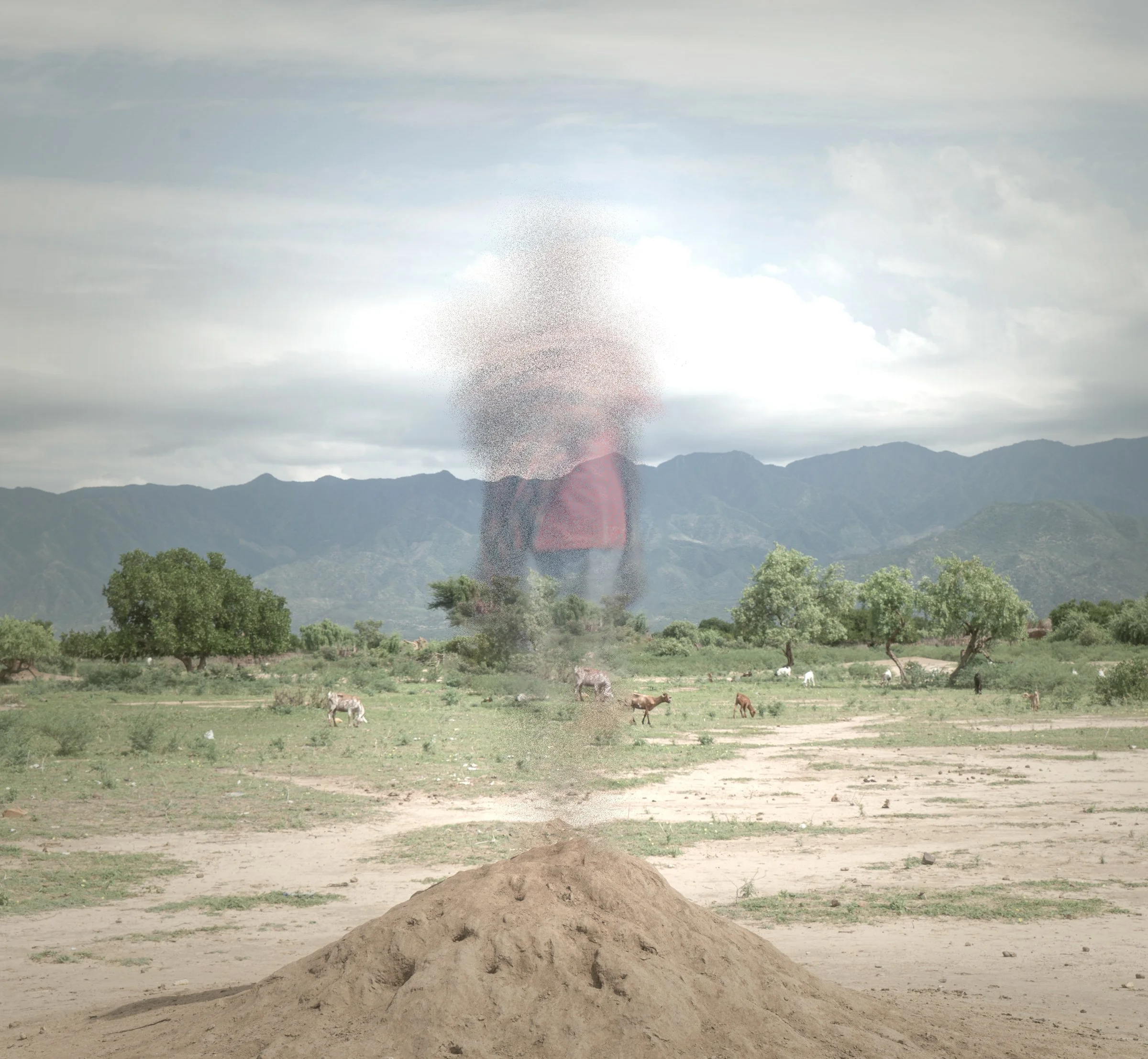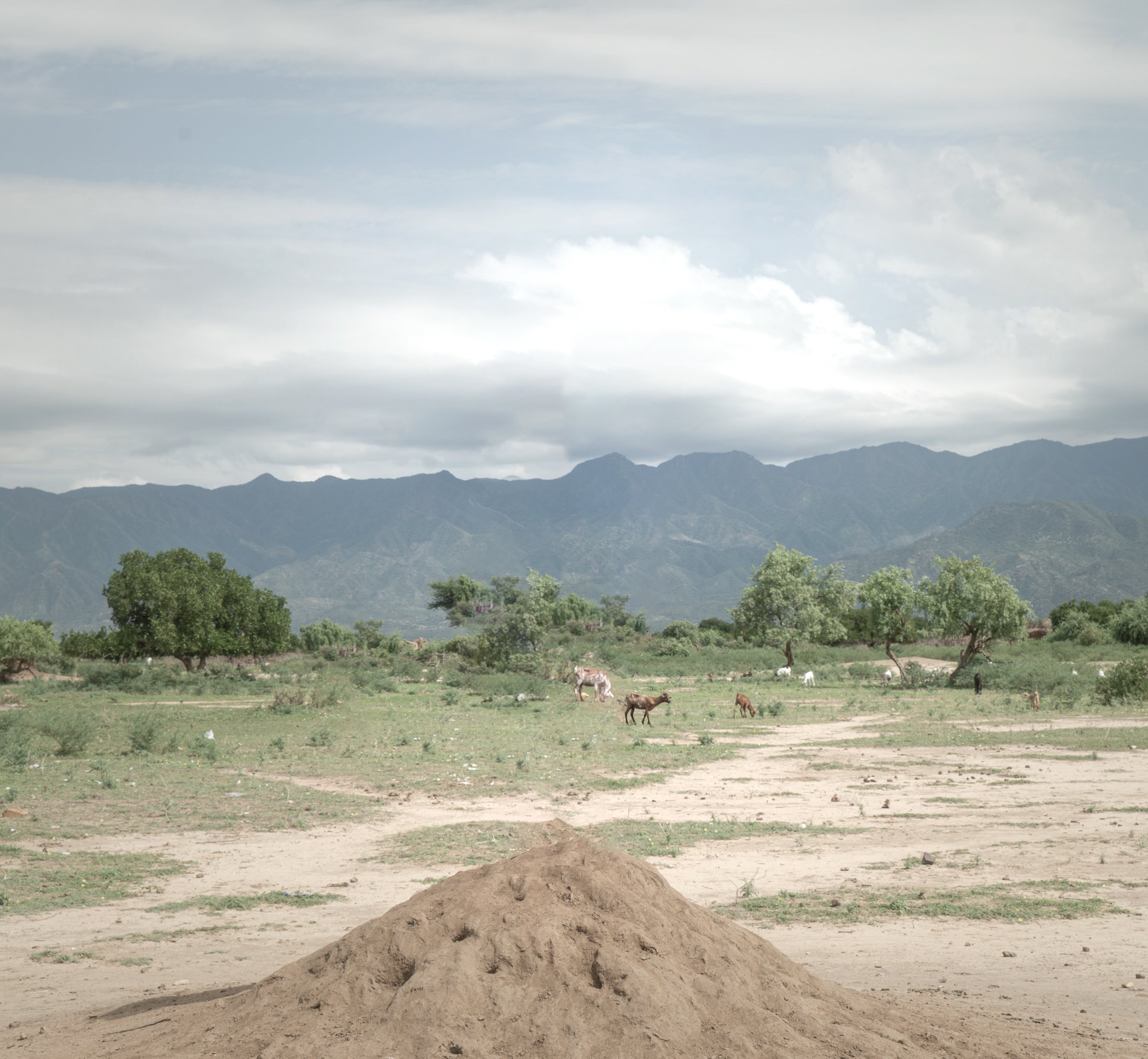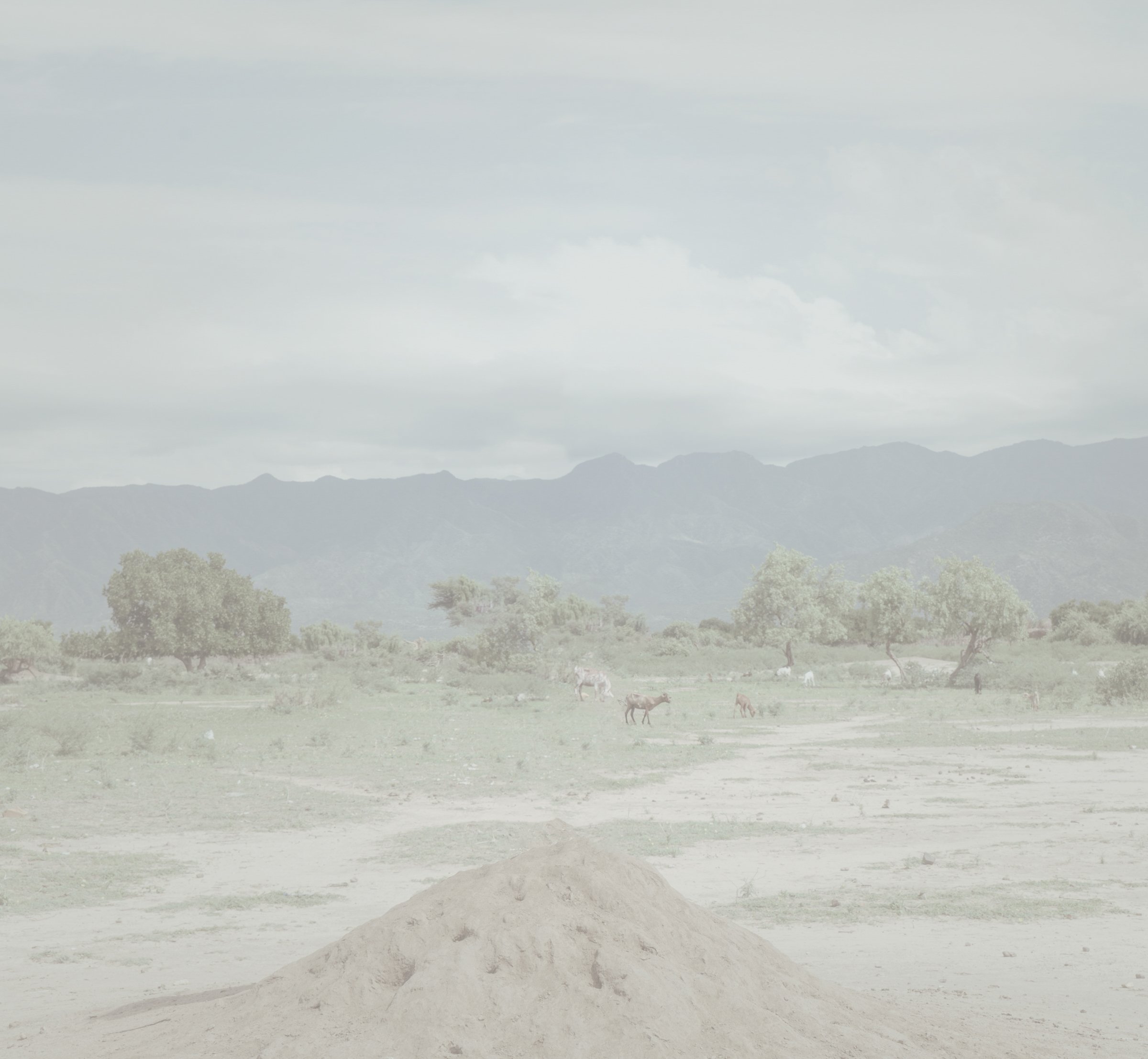The Art of Disappearing.
To be seen instead of to see. Trying to understand how we are seen from the other side.
“There is of course a personal and direct involvement in the places that I later depict but(and), my artistic practice involves researching into historical archives looking for testimonials from other visitors , narratives, legal documentation, media that is deconstructed in order to re-build another reality that is linked to visual emotions and the narrative of images, objects and graphics.”
The Art of Disappearing tries to bring awareness of the languid evanescence of the Arbore tribe in Ethiopia where their last 2,300 members are currently living. The modernization of the roads and the easier access of visitors is changing their way of life. They become others, losing, first slowly and lately in an accelerated way, their identity. Cultural disappearance is brought about by changes in the traditional way of life, from the means of transportation to the pollution of modern lifestyles.
I have watched them disappear for years. Like so many in so many other sites. The roads, financed and built by the Chinese government, force their relocation. The trucks pass by, flooding people and cabins with dust.
But not least, the perception of the reality of the other is shaped and distorted by the outer and “foreign” channels they receive information through; guides, visitors, photographers, tourists.
This work is intended to be a glimpse at the other side of the mirror, trying to understand what it reflects and how we are interpreted by the "other" when he goes from being observed to being an observer.
In this series, text, objects and images are juxtaposed so that the conscious and unconscious are related, re-signifying in an articulated way the conversation between parallel and yet convergent universes. The "indigenous" proposal together with the experiences, prejudgments and sensibilities of the photographer is shaping my experience.
I am not interested in images as objective elements per se, I wanted to contextualize them (never better said) aided by real anecdotes lived in the first person and others narrated by third parties with the intention of bringing to the viewer the Real experience –if this ever exists- of this world, unlike the Hyperreal or Ideal indigenous world.
“You can cross now, the crocodiles are sleeping…”
DECLARATION OF RIGHTS. Resolution adopted by the General Assembly on 13 September 2007. 61/295. United Nations Declaration on the Rights of Indigenous Peoples
Article 8
1. Indigenous peoples and individuals have the right not to be subjected to forced assimilation or destruction of their culture.
Article 10
Indigenous peoples shall not be forcibly removed from their lands or territories. No relocation shall take place without the free, prior and informed consent of the indigenous peoples concerned and after agreement on just and fair compensation and, where possible, with the option of return.
““ We have become women “
“Now, we can’t watch our cattle,” Olishwai insisted. “When the hyenas come, we can’t do anything about it. We have become women. These hyenas come, and the only way we can scare them off is to point a flashlight at them. The government gives us nothing.”
Roc Morin/VICE News.
Jun 29 2015,”
In the classic indigenous proposals, indigenous people are the subject of discussion but almost never participants in it. Sometimes the image is decontextualized or presented in an exotic environment to highlight differences with respect to the normality of the viewer. I wanted to highlight the distances between the vision of the indigenous-object of the visitor-tourist in order to achieve a certain relationship of complicity between the two.
To be seen instead of to see. Trying to understand how we are seen from the other side.
Limited Edition Prints
GALLERY REPRESENTATION CHICAGO.
Catherine Edelman Gallery
catherine@edelmangallery.com 312.266.2350
Series of only 10 prints each 20 x 22” (51 x 56 cm) / Series of only 6 prints each 31 x 34” (79x 87 cm)
(Click on The Images Below)
Acknowledgments and Bibliography
I would especially like to thank the scholars who have provided me, through their reading, with invaluable data on the situation of this and other indigenous peoples. I have used, quoting the sources, texts collected from experiences reported by anthropologists and visitors as well as my own.
POWERFUL MOTHERS, RADICAL DAUGHTERS: Tales about and cases of women's agency among the Arbore of southern Ethiopia. Echi Christina Gabbert
David Turton. Lip-plates and the people who take photographs. ANTHROPOLOGY TODAY VOL 20 NO 2, APRIL 2004
Roc Morin/VICE News.. Jun 29 2015, Quoted from the work "How they tricked us".
Oakland Institute. https://www.oaklandinstitute.org/. Oct 30 2019
Finally, I would like to make mention of the interesting and learned bibliography that has helped me in this work.
The Impact of the Role of Traditional Leaders on Politico-Governance in Somalia: Said M-Shidad H. Hussein
Sorghum Cultivation and Cultivar Selection by the Arbore of Southwestern Ethiopia . YUKIO MIYAW AKI. University of Osaka Prefecture
Ethnopolitics and Gabra origins. Max Planck Institute for Social Anthropology. Günther Schlee
The Dhaasanac Language. Grammar, Texts, Vocabulary of a Cushitic Language of Ethiopia. Mauro Tosco
Addressing pastoralist conflict in Ethiopia. Dr Yohannes Gebre Michael, Dr Kassaye Hadgu and Dr Zerihun Ambaye
Papers of the 12th International Conference of Ethiopian Studies. Michigan State University 5-10 September 1994. Harold G. Marcus, Editor. Grover Hudson, Associate Editor
